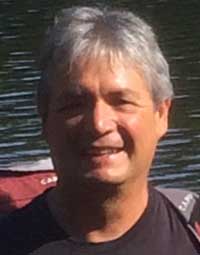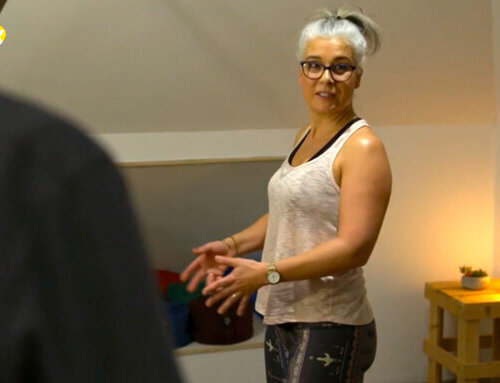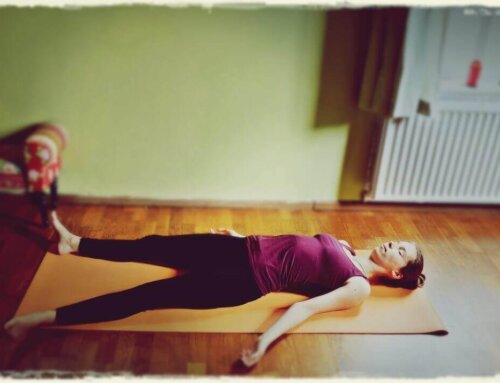– The BackMitra helps dentists to cope with pain –
Dealing with the demands of the dental profession often takes a toll on practitioners and their staff, in the form of pain, acute or chronic, associated with an awkward physical posture and mental/emotional stress. Both accumulate over time, starting during university training and increasing over the years of professional practice.
Long hours at the workplace, demanding surgical procedures performed in a very limited and often inaccessible space (the oral cavity), dealing with the fear and emotional response of patients with their different personalities, plus demanding administrative duties often lead to pain medication intake on a constant basis and/or to alcohol or other drug utilization (1,2,3). Sometimes early retirement is unavoidable.
Statistical information provides us with a glimpse of the problem. A recent literature review and meta-analysis using several databases (Medline, CINAHL, LIVIVO, Science Direct, PubMed and Web of Science) reported a total of 41 studies of which 30 met the criteria for a meta-analysis [4].
Prevalence rates of pain and musculoskeletal diseases among dental professionals ranged from 10.8% to 97.9%. The neck was the body region affected most often (58.5% – 95% CI = 46.0 – 71.0), followed by lower back (56.4% – 95% CI = 46.1 – 66.8), the shoulders (43.1% – 95% CI = 30.7 – 55.5) and the upper back (41.1% – 95% CI = 32.3 – 49.9). Apart from the neck, upper and lower back pain was reported also in the buttocks, hips and knees.
The identified risk factors included an awkward working posture, high number of treated patients, administrative work, vibration and repetition of movement. It was concluded that musculoskeletal diseases (from here on MSKD) and pain are a significant health burden for dental professionals. The study showed high prevalence rates for several body regions and concluded that suitable interventions for preventing MSKD and pain among dental professionals are needed (4). Let’s not forget about their auxiliary staff as well.
Work related disorders seem to have a major detrimental effect on daily activities other than work, especially among those professionals with patient contact more than 30 hours per week. Affecting activities such as sports, shopping, cooking or other home duties. At least 40% of respondents had to go on sick leave, 23% had to reduce their working hours and 39% had to seek some treatment for pain. Furthermore, some felt unhappy and “low” after working hours were finished and felt that this affected their care of patients. Other studies report sickness absence, changing the work setting and even claiming compensation as the outcome for work related MSKD.
So can anything be done to avoid the deleterious effects of doing nothing or resorting to painkillers, alcohol or drugs? Furthermore is it possible to enjoy a pain free body while still practicing dentistry?
The answer is definitely yes!
Introducing restorative yoga with a BackMitra is a desirable and effective intervention since the practice aims at relaxing body and mind. A daily practice with the BackMitra cultivates gentle body movement, use of breathing exercises and the development of mindful attention in a pretty scientific and methodic way that will allow the practitioner to trigger a more predominant residence in the parasympathetic nervous system (as opposed to the sympathetic nervous system which means the fight or flight response mode). Living in a relaxed but alert/clear mind mode may even lead to better decision making during dental practice. A compassionate state of being as cultured in yoga may lead to doing more for the patients, instead of to the patients. And last but not least, living in a less painful mode both physical and mental will provide us with the opportunity to enjoy a more productive, healthy, prolonged and happy professional life.
I started dental school forty-five years ago. Since then dentistry became my passion. Everything was going nice and smoothly until the first signs of discomfort started to appear. So I took some non-steroidal anti-inflammatory drug (NSAID) or found a good massage while visiting a spa in some of the beautiful resorts in Mexico. A practice of Tae Kwon Do provided enough bodily movement and playful distraction for two hours every day. This worked out up to my late forties and mid-fifties, but at some point I decided to stop this practice, because lesions and routine accumulated.
I became a “couch potato” for two years and the result was a rigid body with very little range of movement. All sorts of pain, very much like the ones mentioned in the statistics section of this paper, plagued my body on a daily basis. Since for medical reasons I cannot take any form of NSAID, the option was acupuncture and the chiropractor’s office. These options took a lot of time in waiting rooms plus the bills.
One day my wife, who had already a yoga practice, out of compassion took home a little strip of foam – a BackMitra. “Give it a try”, she said and showed me some basic movements with the BackMitra placed on my dorsal spine area. The initial pain in my back was so acute that after two minutes I had enough and I was screaming in bad language!
My wife registered for the end of the year yoga retreat at Solstice Yoga Center with Brigitte Longueville. I said, “OK you yoga, me beer at the beach!” When you are done with the yoga we meet and enjoy the beautiful beaches of Oaxaca. Once in Oaxaca I was introduced to Brigitte and I asked her if I could join the group for the early meditation session. She kindly allowed me to stay for the first day of postures as well. Rigidity in my body was such, that Brigitte designated an assistant to kindly help me through the day… Then the second day and I discovered “Yea! This is where I belong!” I loved the breathing exercises, the sitting meditation, the gentle poses. After five days the retreat came to its end and from then on I started regular yoga practice with the BackMitra and ‘Restorative Alignment’, the method developed by Brigitte. Of course I tried almost every other yoga style that came on my path, but always discovered that Restorative Alignment with the BackMitra was the most beautiful and suiting to my body. Pain gradually faded away and recovered the original grip in my hands, working pain free became a blessing.
Some days at the office are harder than others, so for those occasions I keep a BackMitra at my office and after a two or three hour prosthodontic procedure, I go to the back room, lie on the BackMitra and breathe. Five or ten minutes of mindful movement with the BackMitra get me ready for the next patient. This has become an occupational hygiene routine that I share with all my staff either at the clinical or the administrative area.
I sincerely wish young dental students and professionals to become aware of this tool – the BackMitra – early in their professional lives.
May they implement their yoga practice with the BackMitra.
May they be free of physical and mental pain and may they enjoy long and happy professional lives that in turn provide many patients with lasting oral health.For older professionals who did not have this information early enough in life and have suffered from chronic pain and stress, may they be able to implement their yoga practice with the BackMitra and recover a state of well being.
May they be happy and free of pain and enjoy fully the later phases of life without the side effects brought by the nature of dental practice.Light and Peace!
Author:
Dr. Eduardo Izaguirre Fernandez
Querétaro, Mexico
[1] Keena G.A., Wood M.D.
The Prevalence of Alcohol, Cigarette and Illicit Drug Use and Problems Among Dentists
J. Am Dent Assoc 2005; 136(7):1023-1032
[2] Curtis E.K.
When Dentists Do Drugs: A Prescription For Prevention
AGD Impact 2010; 38(3) : 24-28
[3] Baldwin JN, Scott D.M., Agrawal S., Bartek J.K., Davis-Hall R.E., Reardon T.P., De Simone E.M.
2nd Assessment of Alcohol and other Drug Use Behaviors in Health Professions Students
Substance Abuse 2006, 27 (3): 27-37
[4] Lietz J., Kozak A., Nienhaus A.
Prevalence and Occupational Risk Factors of Musculoskeletal Diseases and Pain Among Dental Professionals in Western Countries: A Systematic Literature Review and Meta-analysis
2018 Dec. doi 10.1371 / Journal. pone. 0208628, 2018








Leave A Comment
You must be logged in to post a comment.